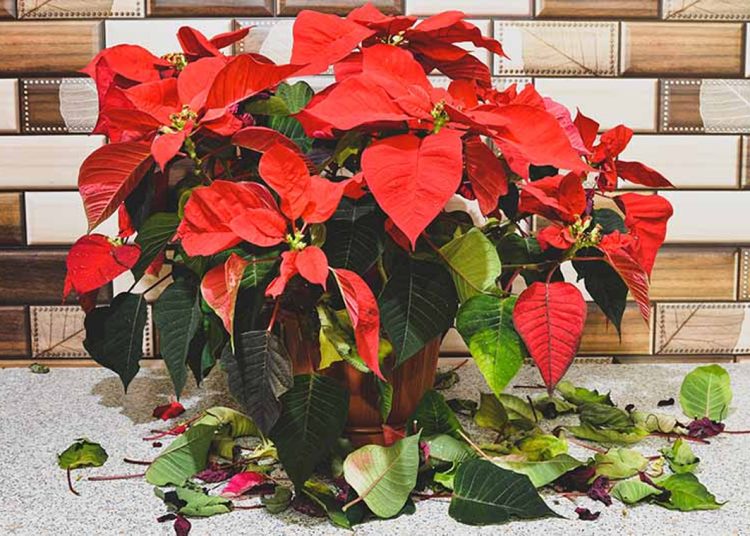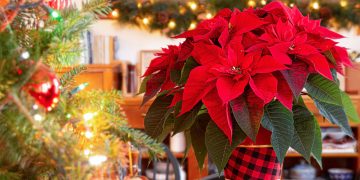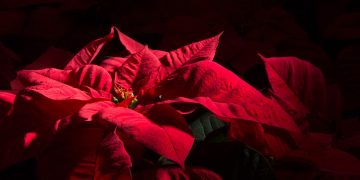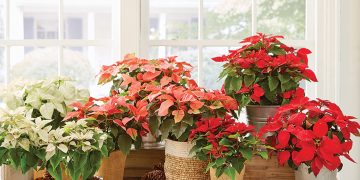Poinsettias are a popular holiday plant known for their vibrant red, pink, or white bracts and green foliage. However, if you’ve noticed that your poinsettia is dropping leaves, you may be concerned. While it’s natural for poinsettias to lose a few leaves over time, excessive leaf drop can be a sign of stress or improper care. Understanding the potential causes behind leaf drop can help you address the issue and keep your plant healthy.
Here are some of the most common reasons why your poinsettia might be dropping its leaves, along with tips on how to resolve the problem.
Environmental Stress
Poinsettias are sensitive to their environment, and changes in temperature, light, and humidity can cause them to drop leaves.
- Temperature Fluctuations: Poinsettias prefer consistent temperatures between 65°F and 75°F (18°C - 24°C). Exposure to cold drafts or hot air from a heating vent can cause the plant to lose leaves. Be sure to keep your poinsettia away from cold windows, doors, and direct heat sources.
- Sudden Changes in Light: Poinsettias thrive in bright, indirect light. If your plant is moved from a low-light area to a spot with intense sunlight or vice versa, it can become stressed and begin shedding leaves. Try to place your poinsettia in a location with stable, indirect light.
- Low Humidity: Poinsettias prefer higher humidity levels. In dry indoor environments, especially during winter when the air is typically drier, your plant might drop leaves to conserve moisture. Consider misting the plant or using a humidity tray to maintain optimal moisture levels.
Watering Issues
Watering is one of the most common reasons for leaf drop in poinsettias. Both overwatering and underwatering can lead to stress, causing leaves to fall prematurely.
- Overwatering: Poinsettias are sensitive to root rot, which can occur if the plant is watered too frequently or left sitting in water. Overwatered poinsettias may exhibit yellowing leaves that eventually drop. Ensure the pot has proper drainage and allow the soil to dry out slightly between waterings.
- Underwatering: On the flip side, if a poinsettia is allowed to dry out completely, it may become stressed and drop its leaves. Make sure to check the soil regularly, and water the plant when the top inch feels dry to the touch.
Fertilization Problems
Too much or too little fertilizer can also cause a poinsettia to lose its leaves.
- Excess Fertilizer: Over-fertilizing can result in leaf burn, yellowing, and eventual leaf drop. If you’ve been feeding your poinsettia too frequently, try cutting back on fertilizer or diluting it to a lower concentration.
- Lack of Nutrients: If the poinsettia hasn’t been fertilized in a while, it may be lacking the nutrients it needs for healthy growth, leading to leaf drop. During the growing season, you can use a balanced, water-soluble fertilizer every 4 to 6 weeks to support the plant’s health.
Pests and Diseases
Pests and diseases can also cause your poinsettia to shed leaves.
- Spider Mites: These tiny pests thrive in dry conditions and may cause the leaves to yellow, curl, and drop. Check for fine webs on the underside of leaves. If you suspect a spider mite infestation, you can wash the leaves with water or use an insecticidal soap.
- Aphids: These pests can also cause leaf drop by feeding on the sap of the plant. Look for small, green or black insects on the undersides of leaves. Aphids can be controlled by gently wiping the leaves with soapy water or using an insecticidal spray.
- Fungal Infections: Poinsettias are susceptible to fungal diseases, especially in conditions of high humidity and poor air circulation. Fungal infections can cause yellowing leaves and leaf drop. If you suspect a fungal issue, remove affected leaves and improve air circulation around the plant.
Natural Leaf Drop
In some cases, leaf drop can simply be part of the plant’s natural life cycle. After the holiday season, as the plant enters its dormant phase, it may shed older leaves as it conserves energy. This is especially true if you’re trying to keep the poinsettia alive after the holidays for next season's bloom. Some leaf loss is normal during this time, and as long as the plant’s overall health is good, this shouldn’t be a cause for concern.
Re-potting Stress
If you've recently re-potted your poinsettia, it may experience some stress as it adjusts to its new environment. This can cause the plant to drop leaves as it acclimates. To minimize stress during re-potting, be sure to use fresh, well-draining soil and choose a pot that’s only slightly larger than the current one.
How to Prevent Leaf Drop
To keep your poinsettia healthy and minimize leaf drop, follow these tips:
- Keep the plant in a stable environment with consistent temperatures and humidity.
- Water the plant properly, ensuring the soil is allowed to dry out slightly between waterings.
- Provide bright, indirect light for the plant to thrive.
- Avoid over-fertilizing or under-fertilizing, and make sure you’re using the right kind of fertilizer.
- Regularly check for pests and diseases, and treat them promptly.
- Don’t panic over a little leaf drop, especially during the natural dormant period after the holidays.
















